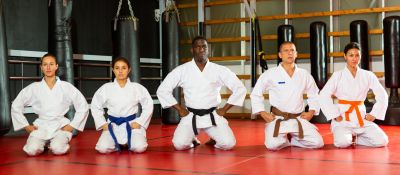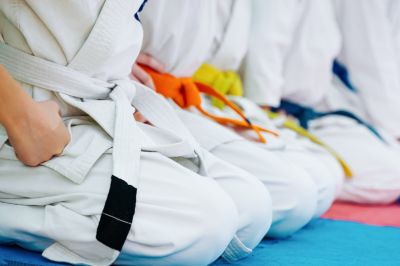Optimal Timing for Practitioner Gradings
Many organizations schedule gradings at consistent intervals, such as every three or six months, to maintain steady progress and motivation.
Gradings are best scheduled after a period of consistent training, ensuring skills are sufficiently developed and practitioners are prepared.
Some dojos align gradings with seasons or holidays to encourage participation and attendance, often in spring or fall.
Major competitions or demonstrations can serve as ideal opportunities for gradings, showcasing skills gained over a training cycle.

Participants demonstrating skills during a grading event.

Practitioners preparing for their upcoming grading.

Instructors evaluating students during a grading.

Participants celebrating their achievements after a grading.

A student showcasing techniques during a grading.

Instructors providing feedback during grading.

Students in traditional uniforms for grading.

Celebrating success after passing a grading.
| Timing Consideration | Details |
|---|---|
| Post-Training | Ideal after consistent practice to ensure skill mastery. |
| Seasonal Timing | Spring and fall are popular times for scheduling gradings. |
| Pre-Event | Align with competitions or demonstrations for added motivation. |
| Instructor Recommendation | Based on individual progress assessments. |
| Interval-Based | Every few months to maintain steady progression. |
| Holiday Periods | Avoid during busy holiday seasons to maximize attendance. |
| End of Training Cycles | At the conclusion of a training phase or syllabus. |
Gradings serve as a formal assessment of a practitioner's skills and knowledge. They can boost confidence and provide clear goals for ongoing development. Proper timing ensures that individuals are adequately prepared and that the grading process remains a motivating milestone rather than a rushed evaluation.
Statistics indicate that regular gradings, scheduled with sufficient preparation time, contribute to higher retention rates and improved skill acquisition. Practitioners who undergo assessments at appropriate intervals tend to demonstrate better progress and sustained engagement.

A student receiving recognition during a grading.

Tools and gear used during training and grading.

Training environment preparing for gradings.

Practitioners demonstrating techniques during grading.

Ways to make Gradings work in tight or awkward layouts.

Popular materials for Gradings and why they hold up over time.

Simple add-ons that improve Gradings without blowing the budget.

High-end options that actually feel worth it for Gradings.
Individuals interested in scheduling gradings are encouraged to contact for more information. Proper planning and preparation can enhance the experience and outcomes of the evaluation process.
